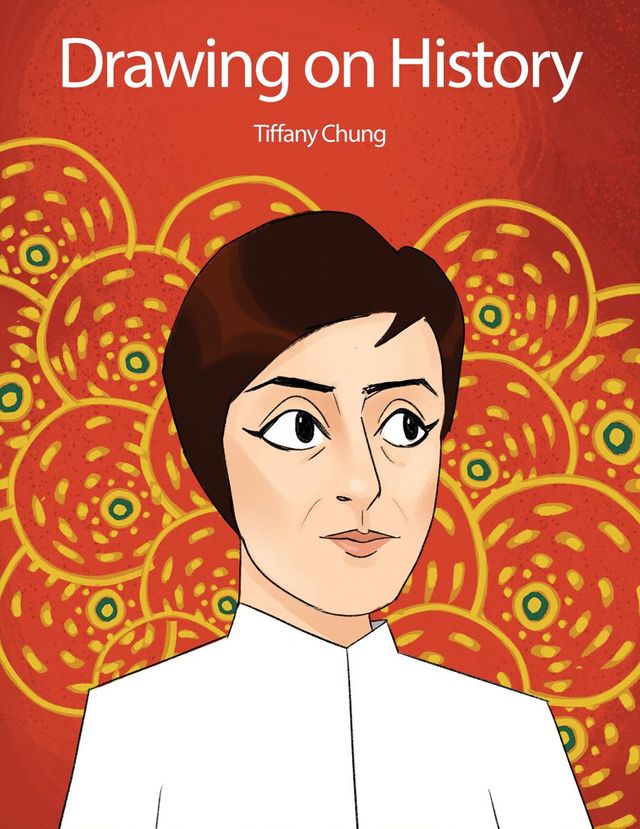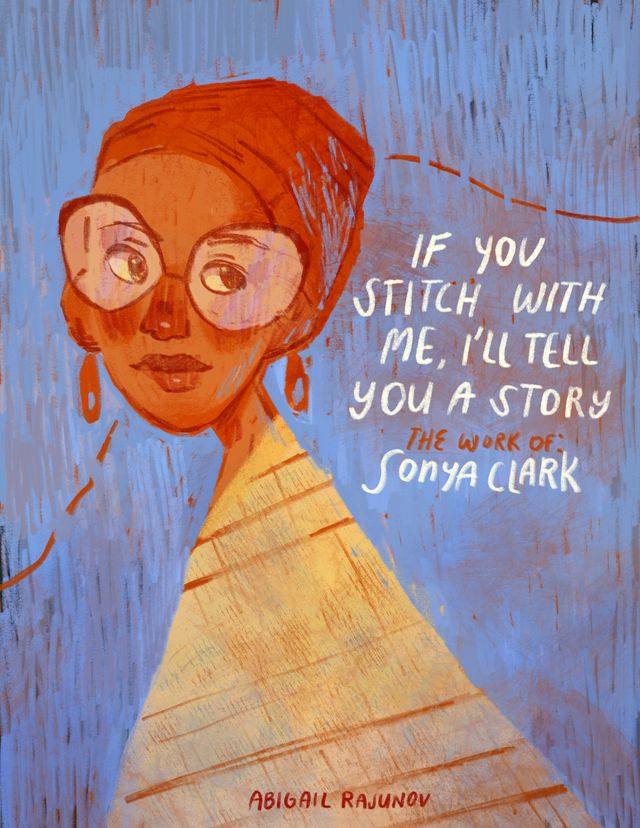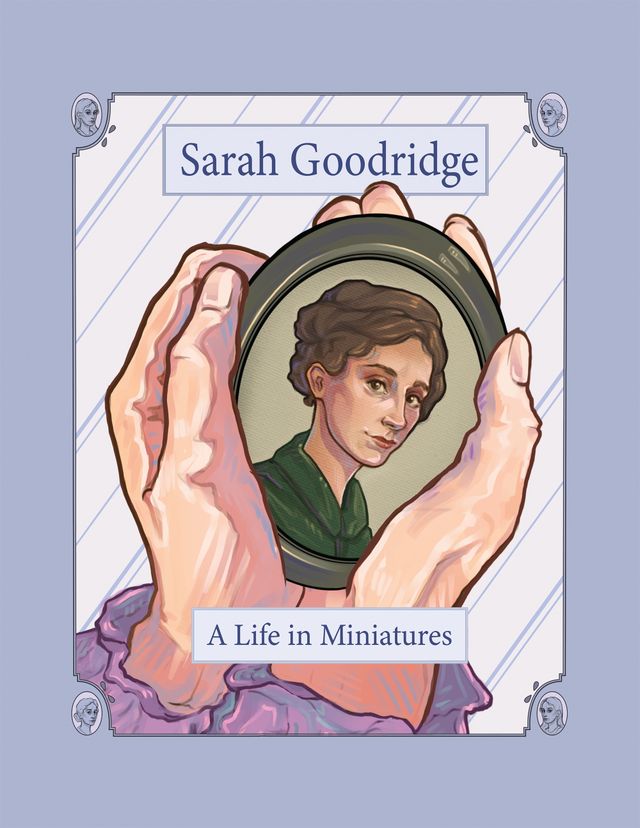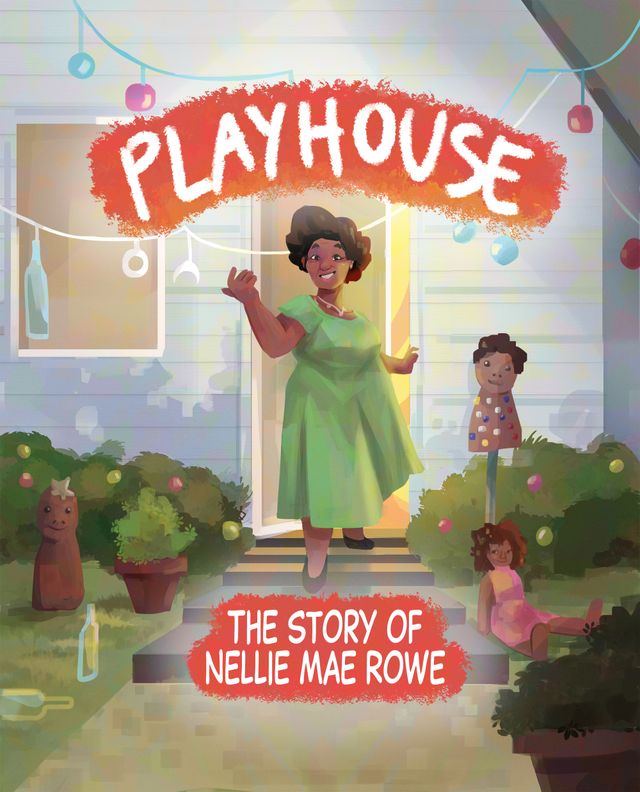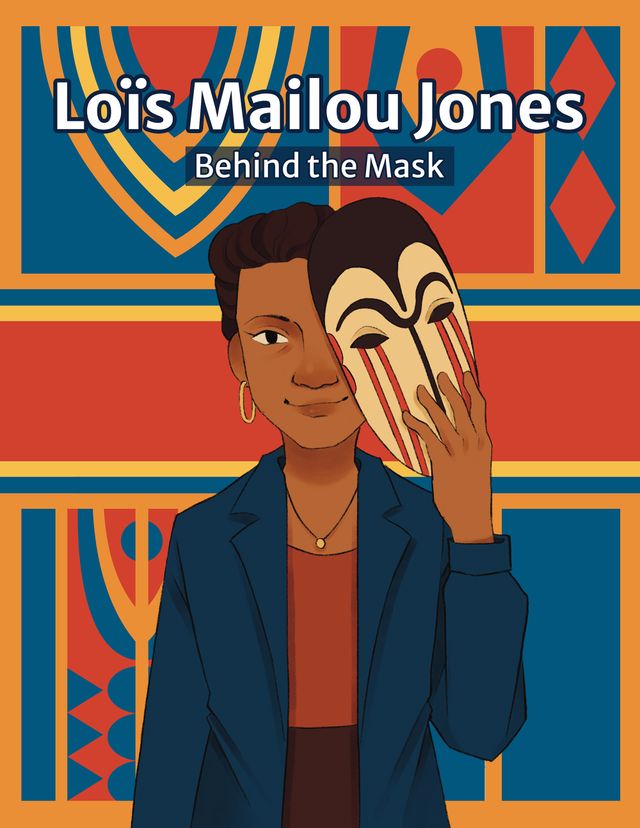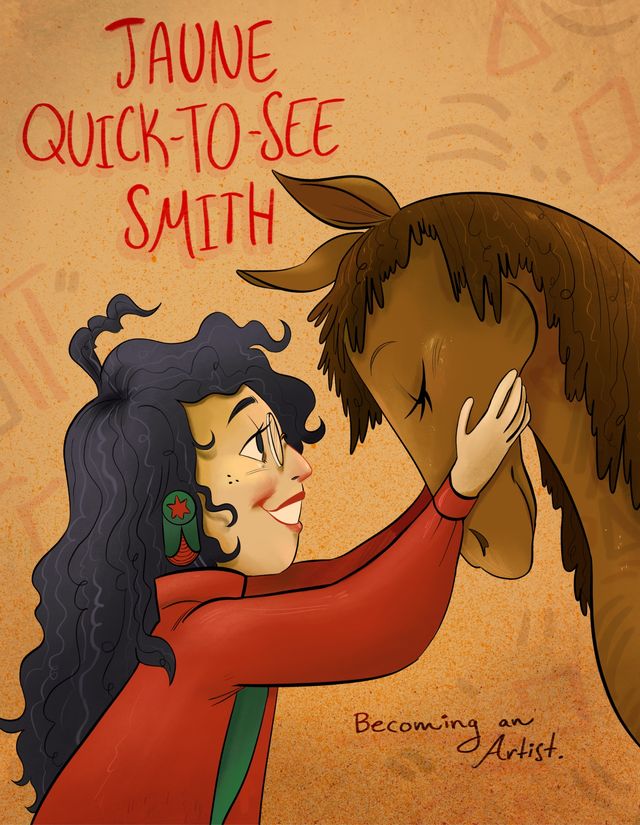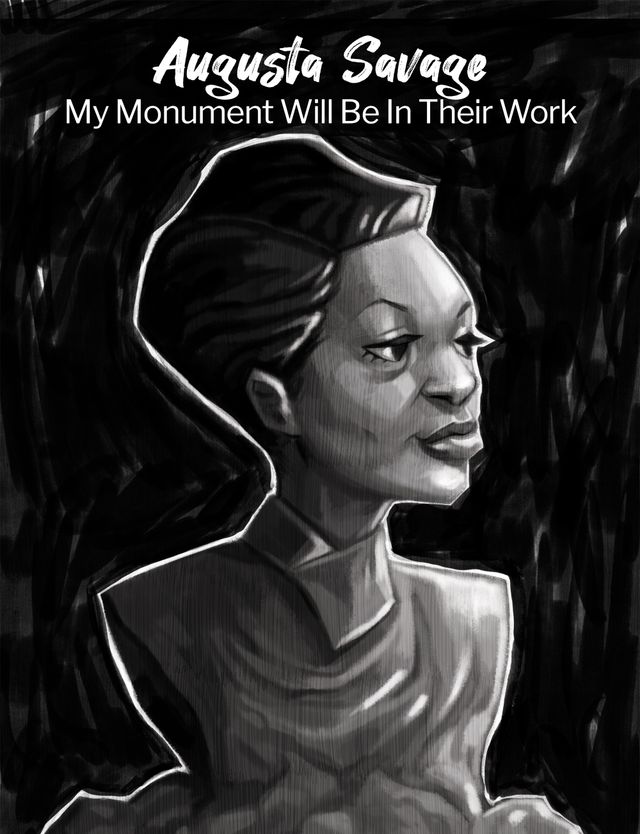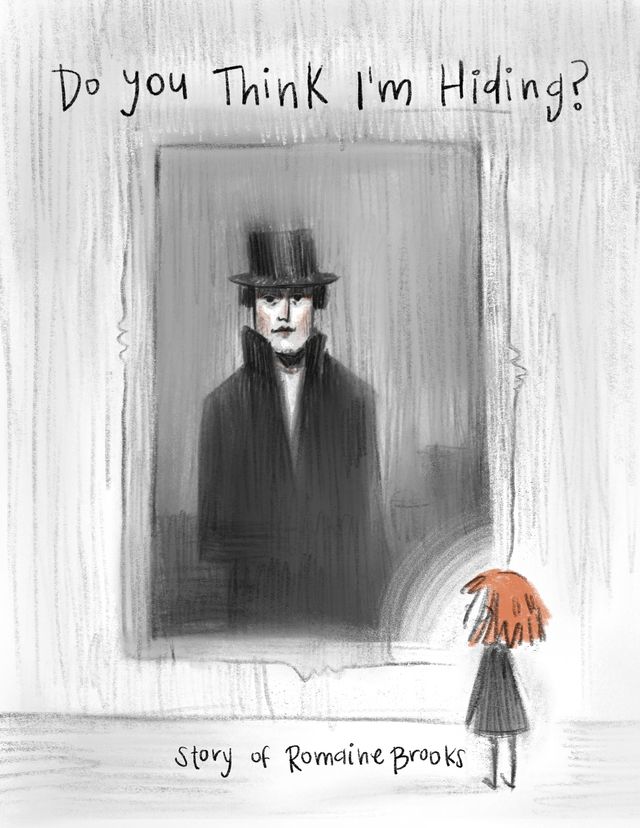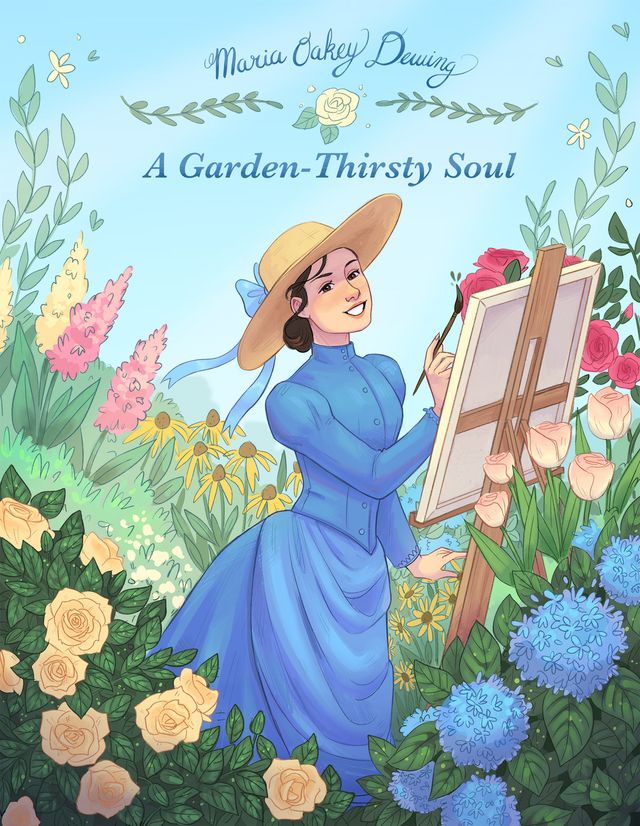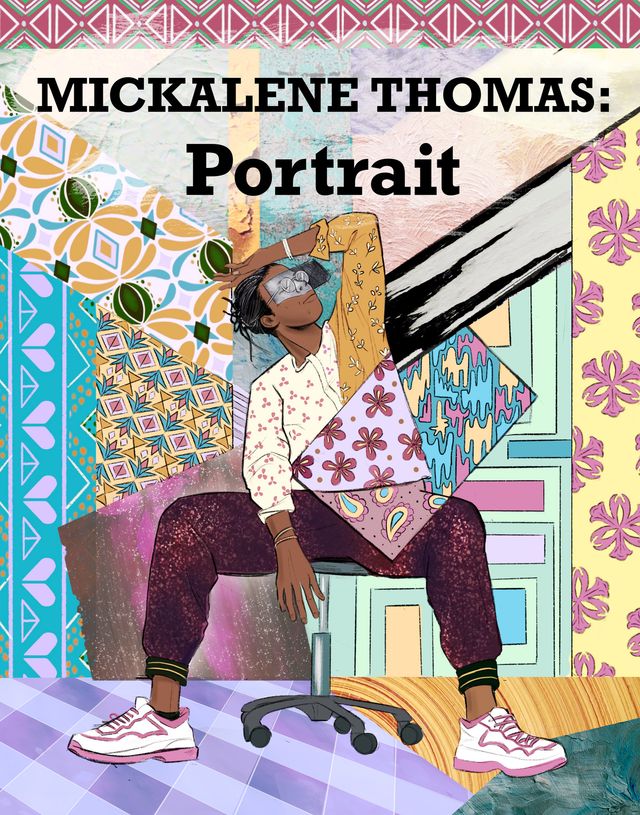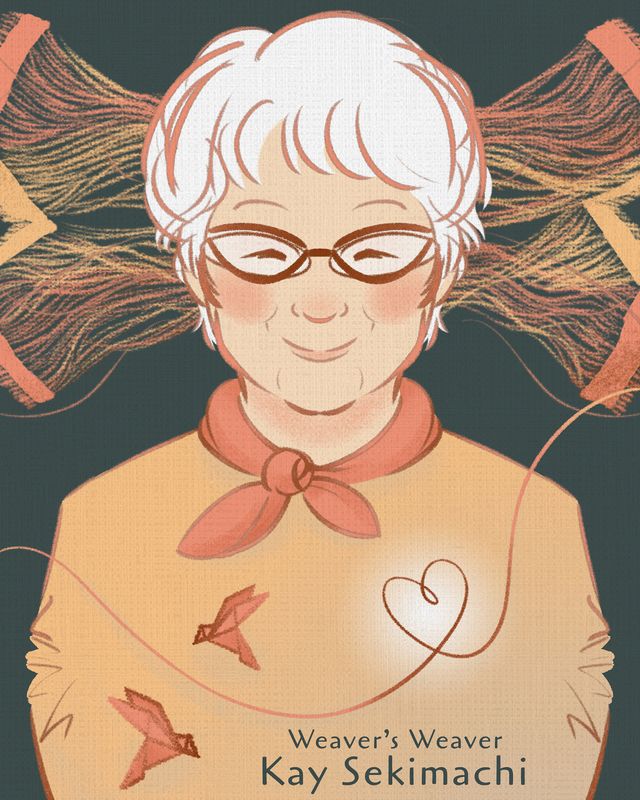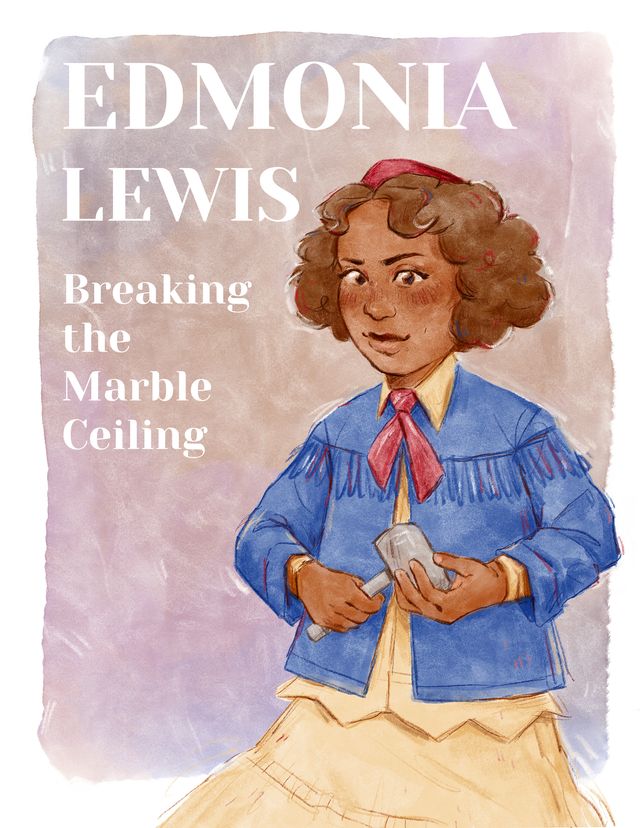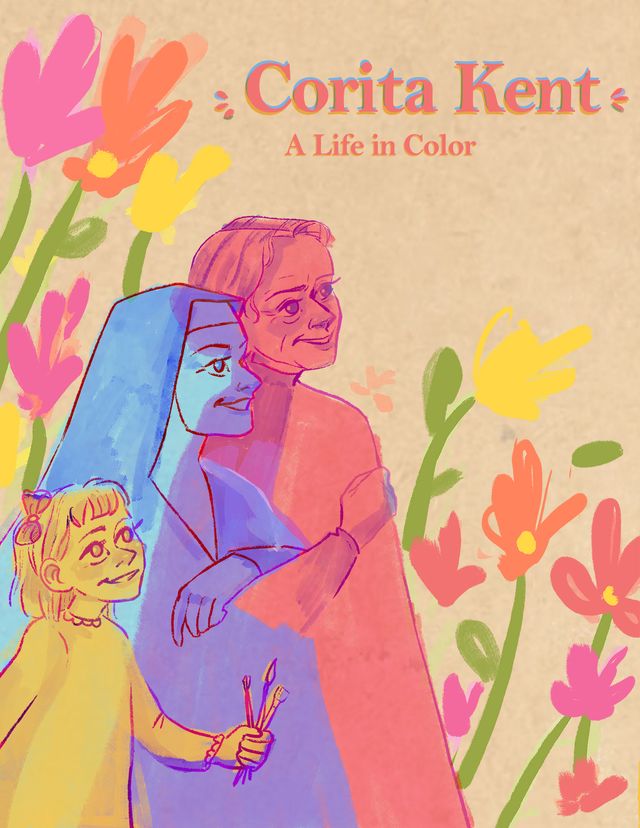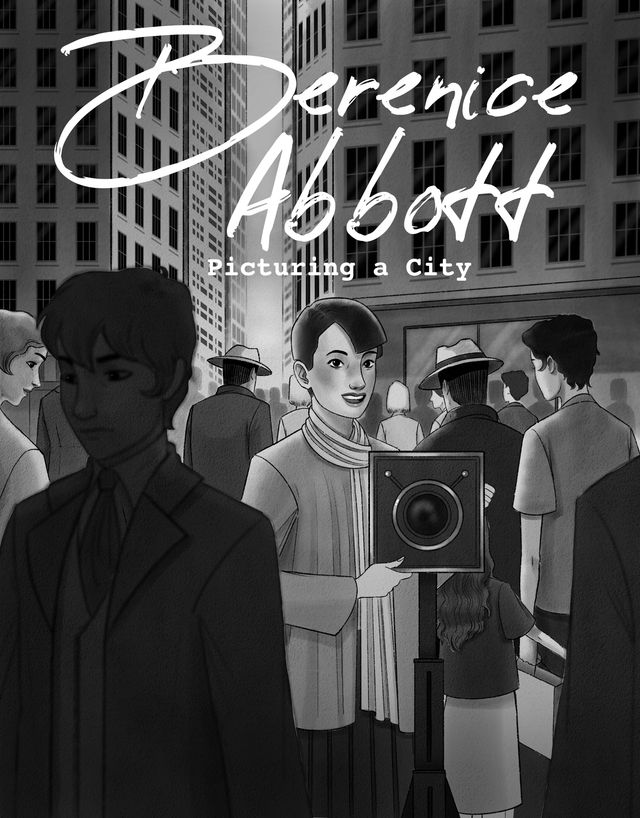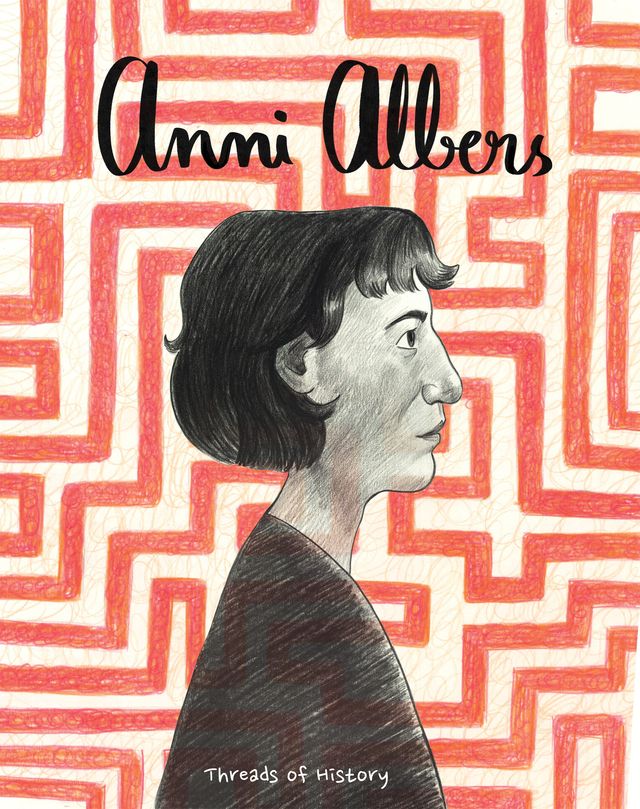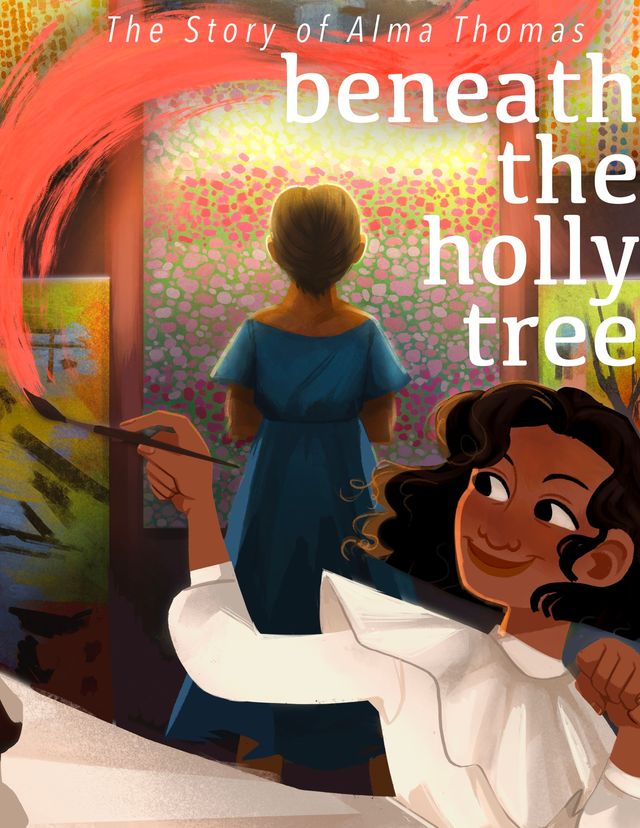An Overview
Fiber artist and weaver Consuelo Jimenez Underwood is the daughter of migrant agricultural workers. In her richly textured creations, she weaves common threads of history and cultural resistance and affirmation.
This comic is part of a series Drawn to Art: Tales of Inspiring Women Artists that illuminates the stories of women artists in the collection of the Smithsonian American Art Museum. Inspired by graphic novels, these short takes on artists’ lives were each drawn by a student-illustrator from the Ringling College of Art and Design.
We invite you to read the comic and share it with your friends and young people in your life.

Cover
A middle-aged woman with a medium skin tone and long wavy dark brown hair stands in the middle of the page looking to the left. She has round black glasses and is wearing a yellow knit sweater and a green knit cape. She is holding two orange flowers with light green stems in her left hand and a purple crochet hook in her right hand, crocheting red yarn around the flowers. She is surrounded by light coral and lavender clouds with more orange flowers popping out from the sides of the page. Two large indigo flowers are on either side of the top half of the page, with smaller red-violet flowers floating between the clouds. Scattered throughout the scene of flowers and clouds, there are small objects related to sewing, including scissors, needles and thread, spools, a weaving bow, and safety pins. Large yellow stars outlined in orange also are interspersed throughout. In the bottom right corner, there is a large purple crochet hook. The top of the hook is connected to the figure’s green knit cape, while the rest of the hook is wrapped in purple yarn that twists to form the letters at the bottom of the page that spell out the comic's title "Born to Weave." At the top of the page the same purple yarn spells out "Consuelo Jimenez Underwood."
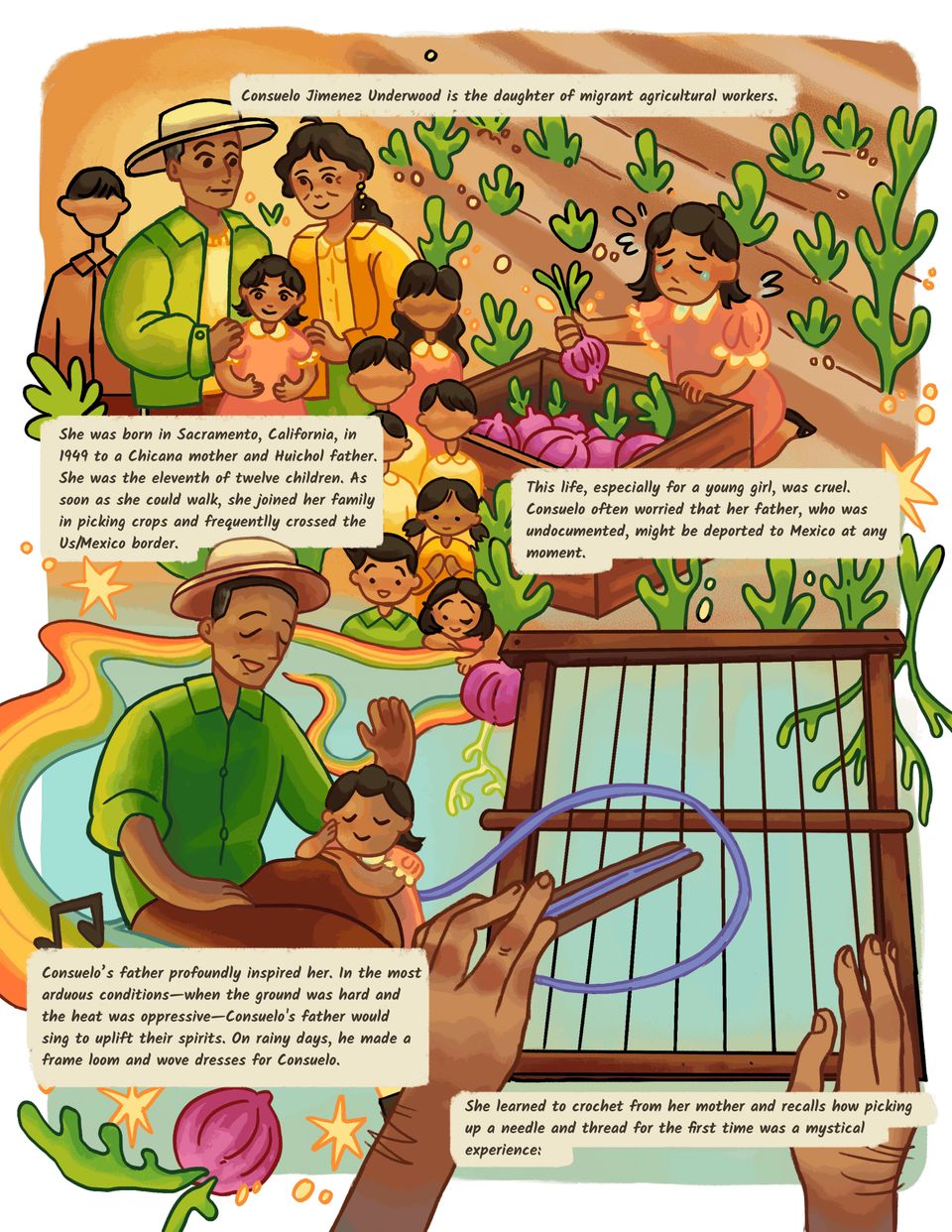
Page 1
Background: This page is split into four panels, one on the top half of the page, and one on either side of the bottom of the page. The illustrations sit on top of a white background. There are five text boxes that are light gray with black italicized text.
Panel 1
This panel has two overlapping halves. On the left there is an illustration of a large family. A middle-aged man with a medium skin tone and short dark hair stands with his right hand on the shoulder of a young girl in front of him. The man is wearing a yellow sun hat and a yellow undershirt with a green collared long-sleeve shirt on top. To his right there is a middle-aged woman with a medium skin tone and curly brown hair pulled into a ponytail. She is wearing a yellow blouse with an orange collared jacket on top, and green pants. Her left hand is on the other shoulder of the girl in front of her. The girl standing between the two adults is young, with a medium skin tone and short dark brown hair. She is wearing a pink dress with a white collar and smiles at the viewer. To the left of the father a faceless young boy with a medium skin tone and cropped brown hair stands wearing a brown collared shirt and brown pants. To the right of the woman there are seven children, all with short brown hair and medium skin tones, wearing collared yellow, pink, and green shirts. Text at the top of the page reads: "Consuelo Jimenez Underwood is the daughter of migrant agricultural workers." Text at the middle left of the page reads: "She was born in Sacramento, California, in 1949 to a Chicana mother and Huichol father. She was the eleventh of twelve children. As soon as she could walk, she joined her family in picking crops and frequently crossed the US/Mexico border."
Panel 2
The second overlapping half of the top panel is an illustration of Consuelo as a young girl. She kneels on the ground bent over a wooden box filled with beets. She has her left hand on the edge of the box and is holding a beet in her right hand over the box. She is wearing a light coral dress with a yellow collar and frill accents on the sleeves. She has short dark brown hair and is frowning with tears in her eyes. Behind her are rows of vegetables, with the tops of the beets sticking out of the light brown soil. Text reads: "This life, especially for a young girl, was cruel. Consuelo often worried that her father, who was undocumented, might be deported to Mexico at any moment."
Panel 3
A man with a medium skin tone is singing, sitting on a rainbow that curves around him. He has short dark hair and is wearing a yellow sun hat, a green collared button-up shirt, and brown pants. His right hand is placed on his lap and his left hand gestures behind the young girl in front of him. The young girl, Consuelo, leans against her father’s knee, with her hand placed in her right hand. She is wearing the same pink dress with yellow accents and is smiling. Musical notes float to the left of the man and a pink beet appears underneath them. Three yellow stars and a few yellow dots sparkle around them. Text reads: "Consuelo's father profoundly inspired her. In the most arduous conditions - when the ground was hard, and the heat was oppressive - Consuelo's father would sing to uplift their spirits. On rainy days, he made a frame loom and wove dresses for Consuelo."
Panel 4
A wooden loom sits against a light teal background. Two hands with a medium skin tone reach out from the bottom of the page. The right hand sits against the loom, while the left hand holds a weaving bow threaded with lavender yarn. Text reads: "She learned to crochet from her mother and recalls how picking up a needle and thread for the first time was a mystical experience."
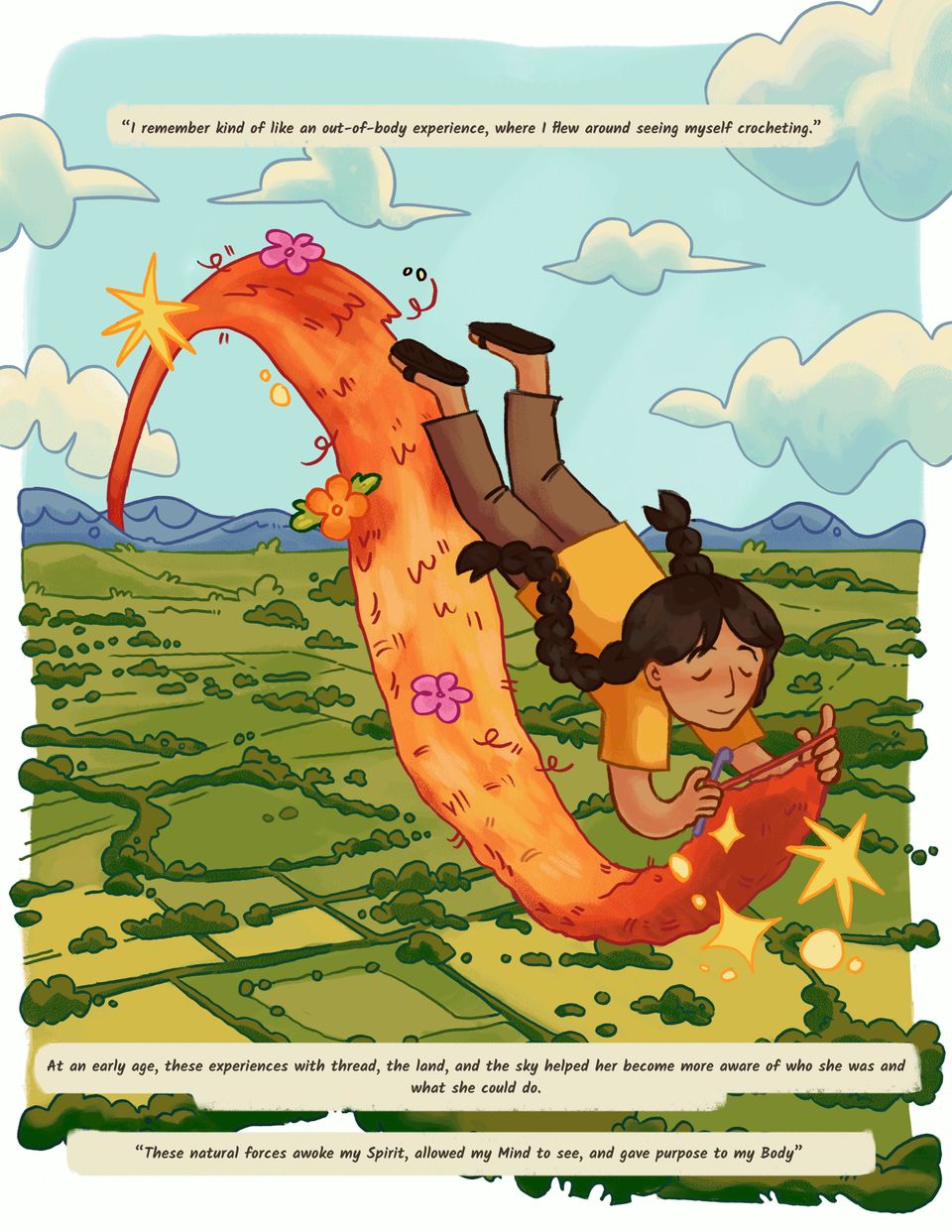
Page 2
Background: This page is one large illustration, sitting on top of a white page. There are three light grey text boxes with black text.
There is an aerial view of a green landscape, with rolling dark blue mountains, and a light blue sky. Big fluffy light blue and cream clouds roll through the landscape off the edges of the page. The ground is various shades of green, with agricultural fields and trees covering the bottom half of the page. Floating on top of this landscape is Consuelo as a young girl, holding onto a long crochet piece that emerges from the mountains in the back. She flies, holding onto the top of the yarn, holding a crochet hook with her right hand, and the orange thread of the piece in her left hand. She is wearing a yellow T-shirt and brown pants with dark brown sandals and her dark brown hair in two braids down her back. She is smiling, with her head facing the bottom right corner of the page and her legs floating up behind her. The orange arc of crochet flows under her, with pink and orange flowers along it. Yellow stars and sparkles float in front of Consuelo and along the edge of the crochet arch. Text at the top reads: "'I remember kind of like an out-of-body experience, where I flew around seeing myself crocheting.'" Text at the bottom of the page reads: "At an early age, these experiences with thread, the land, and the sky helped her become more aware of who she was and what she could do. 'These natural forces awoke my Spirit, allowed my Mind to see, and gave purpose to my Body.'"
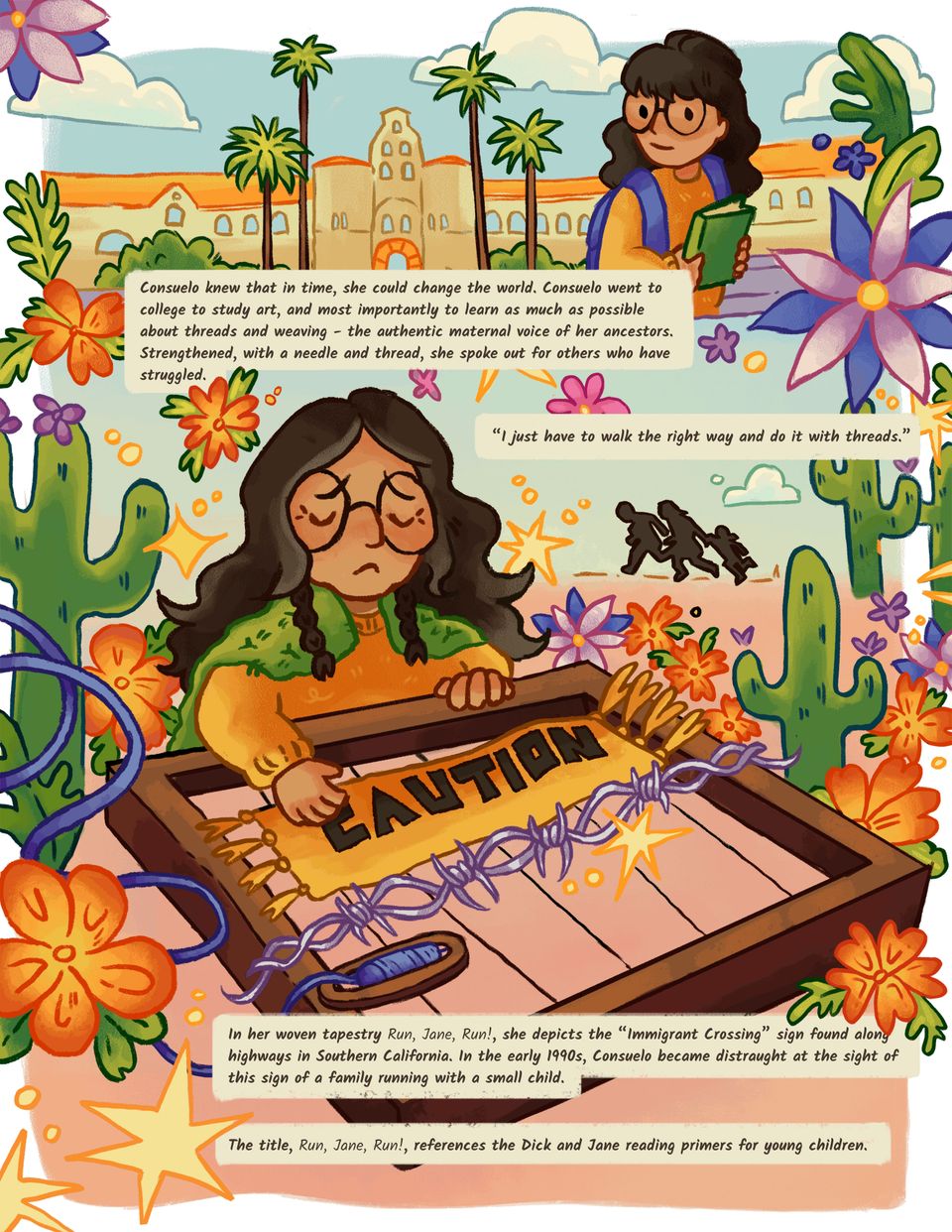
Page 3
Background: This page is made up of two panels, one in the top third of the page, and one in the bottom two-thirds of the page. There are four light gray text boxes with black text. Across the border of the page there are purple flowers with indigo and lavender petals and yellow centers. There are also orange flowers with green leaves, and yellow stars and sparkles. These accents sit on top of the edge of the panels.
Panel 1
Consuelo as a young woman stands in the upper right-hand corner of the page wearing a purple backpack and holding a green book. She has long curly dark brown hair with braids and is wearing an orange knit sweater and round black glasses. She to her right across the panel. Behind her is a scene of a large yellow building with orange clay roofs. The central building has a tower and an archway, with four palm trees sticking up out of a row of bushes lining the front of the building. The sky above is light blue with three white clouds. Text reads: "Consuelo knew that in time, she could change the world. Consuelo went to college to study art, and most importantly to learn as much as possible about threads and weaving - the authentic maternal voice of her ancestors. Strengthened, with a needle and thread, she spoke out for others who have struggled." A second text box reads: "'I just have to walk the right way and do it with threads.'"
Panel 2
The background of the panel is a scene of a light orange desert with a light teal sky. The silhouette of a family runs across the landscape. This silhouette is the same image that is scene on caution signs on the US/Mexico border. Large green cacti crop up from the orange soil around the family. In the foreground, a middle-aged Consuelo sits weaving. She has long curly dark brown hair with two small braids in the under layers of her hair. She is wearing round dark glasses and an orange sweater with a green knit cape wrapped around her shoulders. She is frowning, with her left hand placed on the frame of her loom and her right hand touching the central woven image on the loom. The loom has an orange and yellow caution sign woven across it, with purple barbed wire crossing underneath. The loom shuttle sits at the bottom of the loom, with purple yarn looping out of it and off the left hand of the page. Surrounding Consuelo are green cacti and the same purple and orange flowers that sit around the border of the page. Text reads: "In her woven tapestry Run, Jane, Run!, she depicts the "Immigrant Crossing" sign found along highways in Southern California. In the early 1990s, Consuelo became distraught at the sight of this sign of a family running with a small child. The title, Run, Jane, Run!, references the Dick and Jane reading primers for young children."

Page 4
Background: This page is broken into three panels, one on the top left, one on the top right, and one at the bottom of the page. There are three light grey text boxes with black text. The background is a light blue gradient that becomes more yellow toward the bottom. This sits on top of a white border. Along the bottom of the page there is a border of flowers. Some of the flowers are small and dark purple, some are orange with green leaves, and some are hot pink. There are a few large purple flowers and one white flower in the bottom left corner.
Panel 1
This panel highlights the family on the caution sign on the previous page. A black magnifying glass sits in the middle of the panel, zooming in on the woman in the center of the family. Around the magnifying glass, the figures appear as silhouettes, and within the magnifying glass they are illustrated in color. The woman in the center is wearing a yellow blouse and green skirt. She holds her husband’s left hand as he runs ahead wearing a green long-sleeve shirt and brown pants. She holds the right hand of her young daughter who is wearing a pink dress. The family runs toward the left hand of the page. Behind them purple and orange flowers and yellow stars are floating on the light blue background. Within the magnifying glass the background becomes red, as opposed to the blue color outside the glass. An orange yarn rope is tied in knots, flowing through the flowers in the background. Text reads: "Consuelo saw herself and families like hers in this sign, which included a little girl who should have been reading and writing instead of running or picking crops."
Panel 2
This panel is an illustration of Consuelo's woven version of the caution sign. The woven background of the sign is yellow, with brown stitches, and the silhouette of the running family is black. In large black text the sign says "Caution." A long rainbow thread runs across the bottom of the panel and around the bottom of the magnifying glass in the previous panel. Text reads: "Consuelo did not want society to accept the image of a fleeing family as normal. The weaving includes yellow cotton, caution tape, and barbed wire – what Consuelo calls the ultimate border material."
Panel 3
In the center of this panel a middle-aged Consuelo stands crocheting. She has long curly dark hair with gray streaks and is wearing circular glasses and an orange sweater. She is holding a small bit of crocheting that has long rainbow threads flowing out of it and around the background of the page. In between these strands orange and pink flowers with green leaves float throughout the background. Consuelo is surrounded by small children. From left to right there is a girl with a medium skin tone and dark braided hair wearing a purple sweater. Next to her is a young girl with short orange hair and a light skin tone wearing a green sweater smiling and clasping her hands. On the other side of Consuelo there is a young girl with long orange hair and a light skin tone wearing a periwinkle t-shirt. She is smiling and holding onto Consuelo with her left hand. The final girl has a dark skin tone and short black hair. She is wearing a dark orange sweater and has her head resting in her hands. A text box amidst the bottom border of flowers reads: "Consuelo weaves together the struggle, spirit, and perseverance of a little girl from the borderlands, showing all girls that when they seek, find, and study their authentic voice they can craft a better world."

End page
A central illustration sits on a light teal background. There is a wooden loom with yellow warp strings. Woven into the loom is the caution sign from Run, Jane, Run! There is a ball of orange yarn on the left of the loom. To the right there are two spools of thread, one blue and one green, and two safety pins. Around the illustration are three yellow stars with yellow sparkles. Underneath this image, black text reads: "Illustrated by Catherine Vo."














